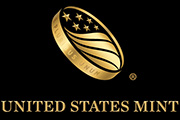A Brief History of the Quarter

The Mint Act of 1792, which created the United States Mint, specified that certain design features appear on legal tender coins, including the quarter-dollar. One side of the coin had to include the year in which it was minted, an image that symbolized liberty and the inscription LIBERTY. For more than 115 years, liberty was symbolized on the obverse (heads) of the coin by allegorical female figures (Lady Liberty) in the form of a bust or a full-length figure. The reverse (tails) of the quarter featured an eagle and the inscription UNITED STATES OF AMERICA.
The representations of Lady Liberty and the eagle on the quarter during the late 18th and early 19th centuries were altered many times to remain consistent with the changing designs of other coins. Lady Liberty started out with flowing hair, and then became a draped bust, then a capped bust. The eagle also underwent several makeovers. It began as a small eagle that many thought looked too much like a pigeon. Over time, the eagle grew to become grander and more heraldic.
In 1932, the 200th anniversary of his birthday, a profile of President George Washington's head replaced Lady Liberty. To celebrate the Bicentennial in 1976, a colonial drummer replaced the eagle on the reverse.
In 1999 the quarter's reverse underwent its first of 50 changes under the 50 State Quarters® Program to honor each state. This popular program generated immense public interest in coin design and history. It was followed by the 2009 District of Columbia and U.S. Territories Quarters Program. In 2010, the United States Mint will launch the United States Mint America the Beautiful™ Quarters Program.
The quarter coin was made of silver from its inception in the 1790s until the Mint Act of 1965 mandated the use of copper-nickel.
